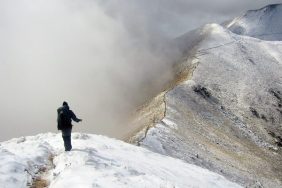 With the cold weather pretty much here to stay, it’s time for outdoorsmen to think about layers when they hit the trail. We’ve covered this practice extensively throughout the years, but today we’ll take a closer look at baselayers, with specific regard to the available material options available on the market.
With the cold weather pretty much here to stay, it’s time for outdoorsmen to think about layers when they hit the trail. We’ve covered this practice extensively throughout the years, but today we’ll take a closer look at baselayers, with specific regard to the available material options available on the market.
Polyester
Probably the most common baselayer material available today, polyester is breathable, moisture-wicking, dries quickly, and is very affordable. Furthermore, it’s common for polyester to be blended with other fibers, such as spandex, which adds enhanced stretch, or nylon to create more durability. A common complaint with polyester, though, is that it often eventually begins to retain body odor. There are brands that use antimicrobial treatment on their polyester to counter this, though.
Polypropylene
Having been around for decades, polypropylene is lightweight, breathable, and dries very quickly. Some people dislike its texture, though, which has led to the rise in polyester popularity. Polypropylene is also tends to retain odor more than other synthetic and natural fibers, too.
Silk
This natural, lightweight, breathable, and moisture-wicking material serves as a very effective baselayer. While it’s very soft and comfortable against your skin, silk isn’t as durable as polyester or polypropylene. It’s also more expensive and may require special laundering, so it’s important to check the label before you toss a silk baselayer in the laundry with your other clothes.
Merino Wool
Merino wool has become increasingly popular in outdoor sports. Unlike regular wool, merino wool is soft and quite comfortable against the skin, and it’s also naturally odor-resistant and biodegradable, which makes it a popular alternative to polyester. Merino wool is more expensive than most synthetics, however. Brands like Icebreaker and SmartWool offer warm, breathable, moisture-wicking, and fast-drying merino products.
Cotton
While cotton is a comfortable material for general wear, it’s not ideal for outdoor recreation. Cotton dries very slowly compared to the other materials, which means that once you start sweating, your cotton baselayer will most likely stay damp until you change clothes. This can be a problem if you stop moving in chilly weather and your baselayer is damp.








